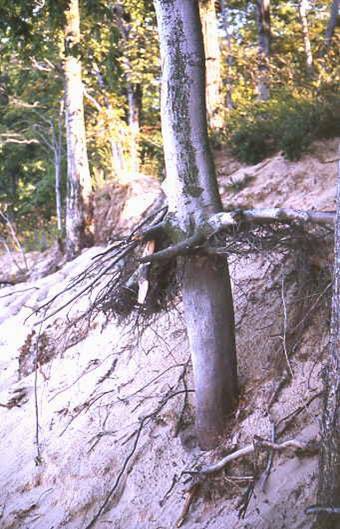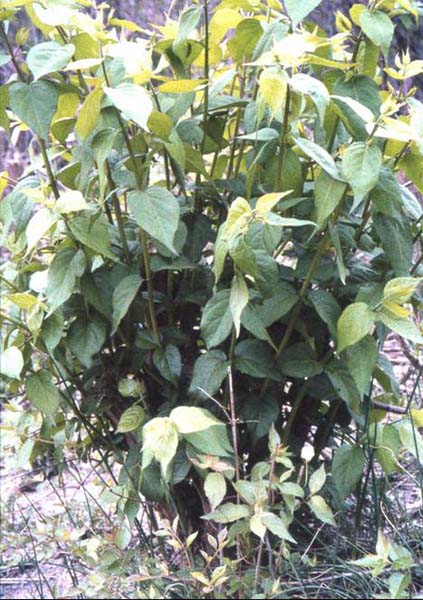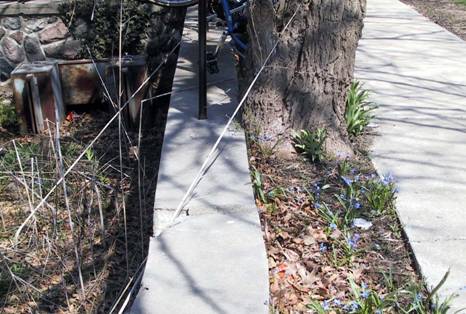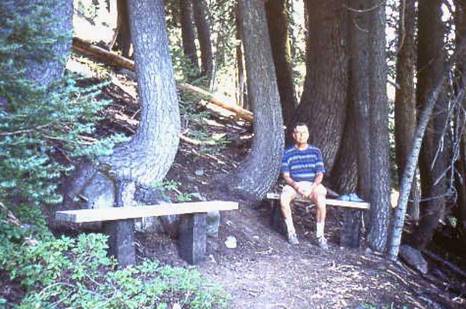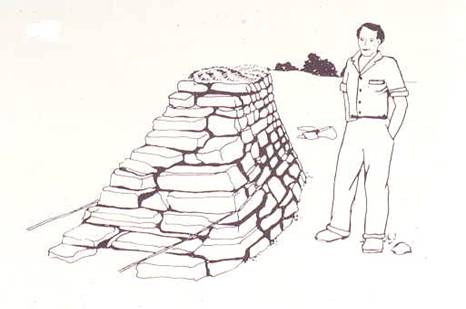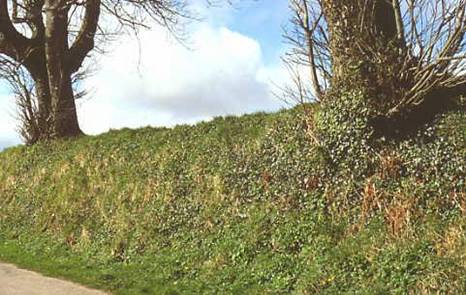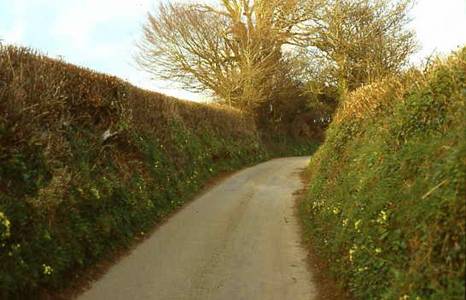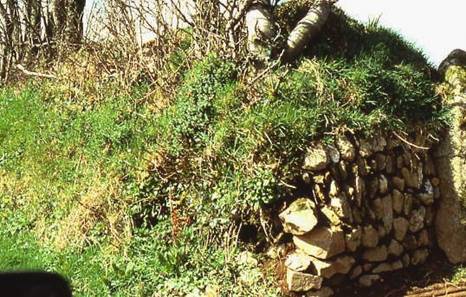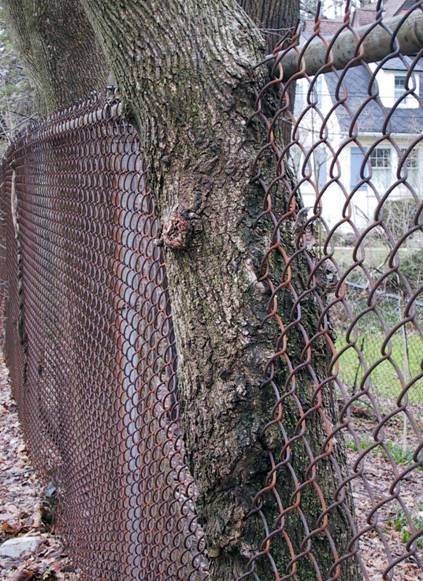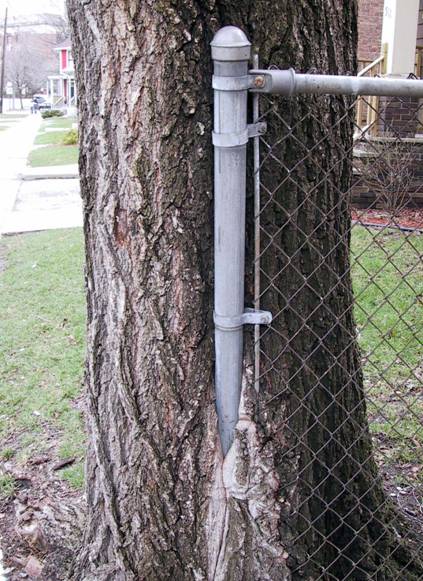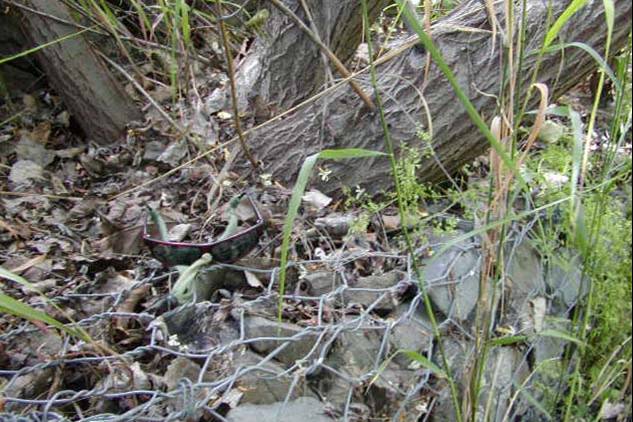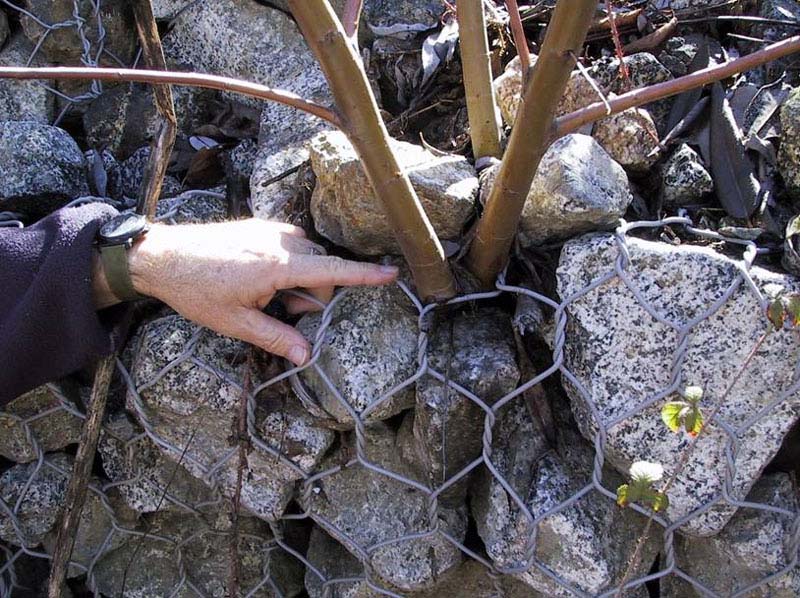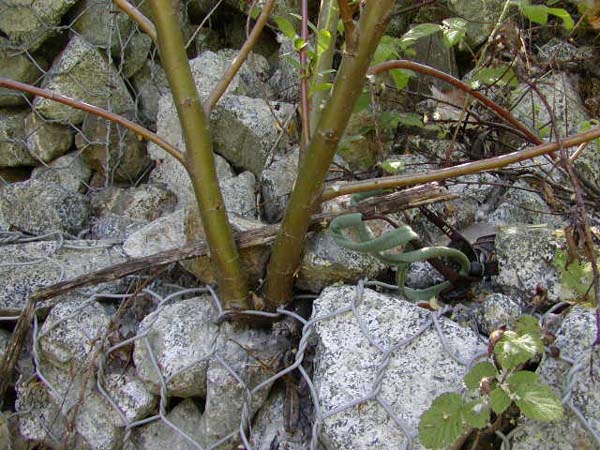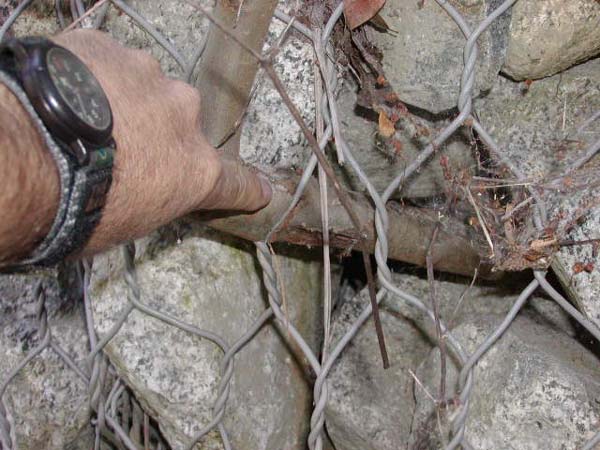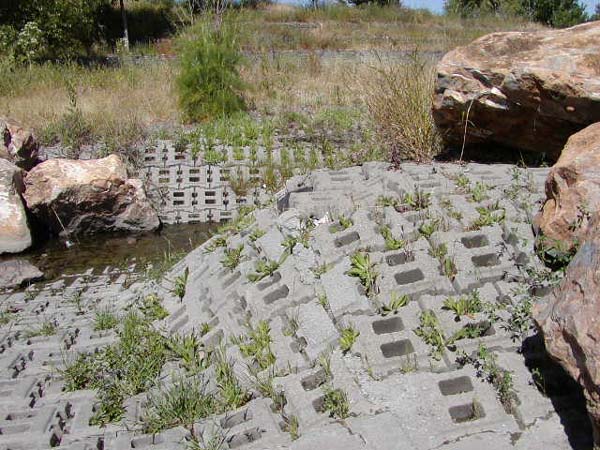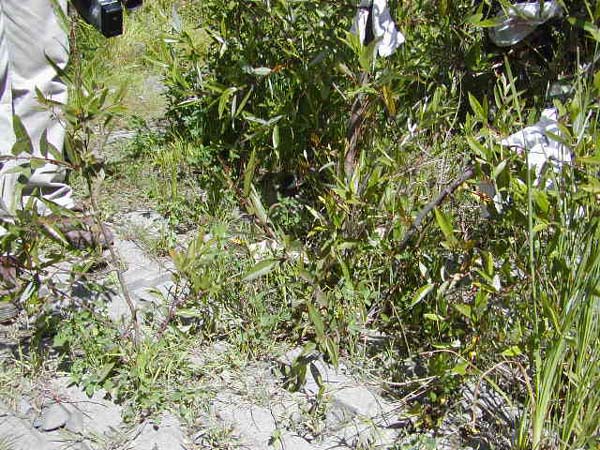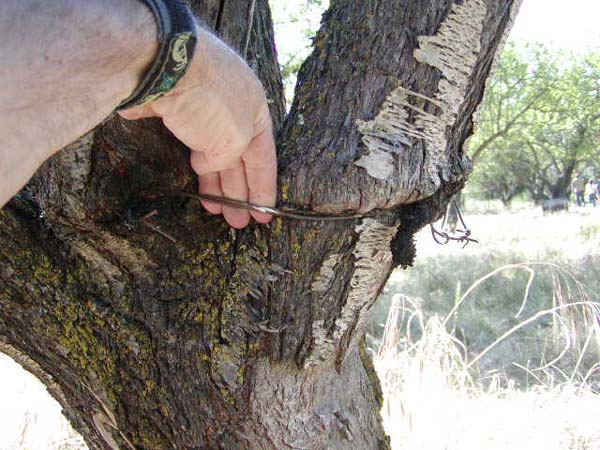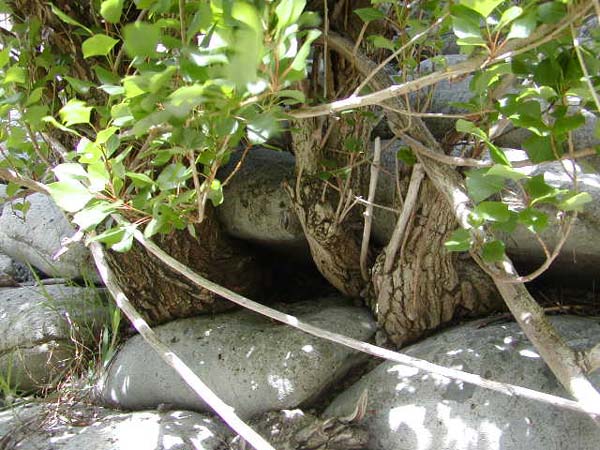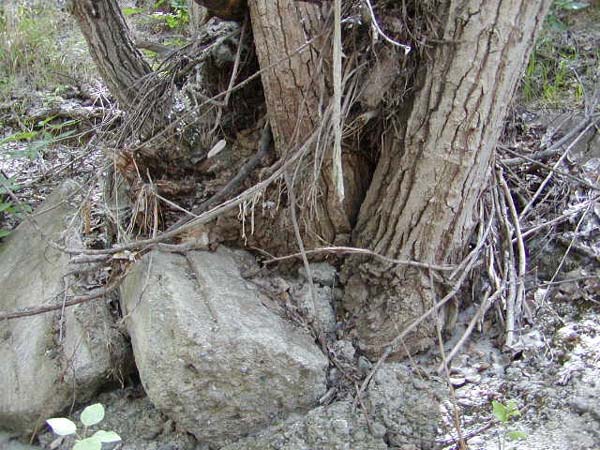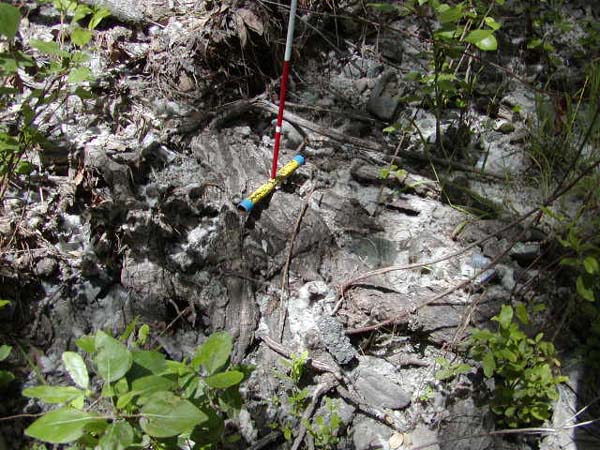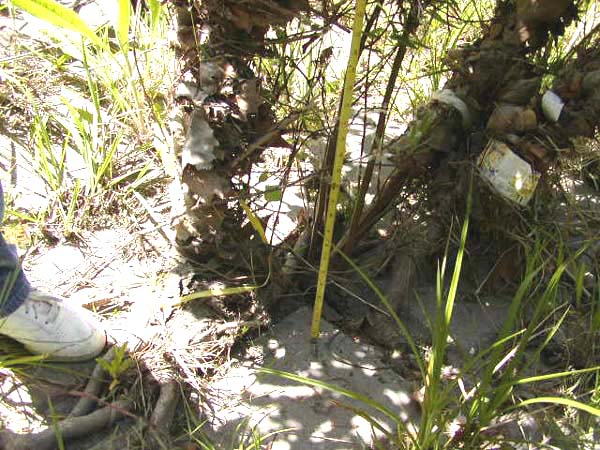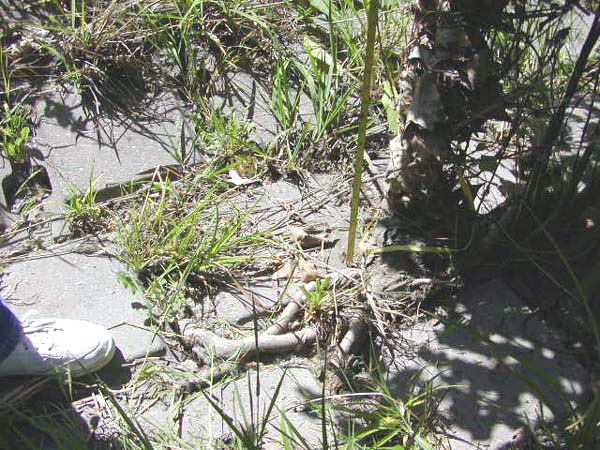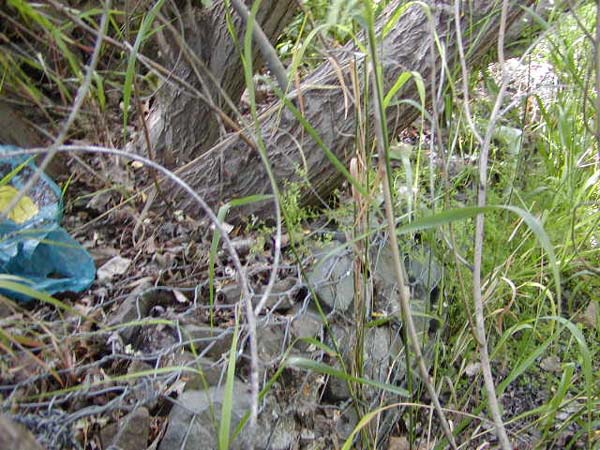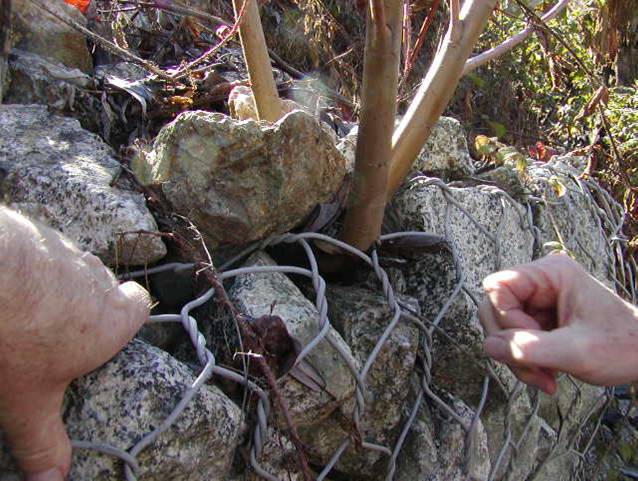| BIOADAPTIVE PLANT RESPONSE |
 |
INTRODUCTION
A common concern regarding the use of plants in conjunction with structures is the danger of physical damage or disruption of the structure (gabions, riprap, etc.) by stems and roots of woody vegetation (Freeman & Fischenich, 2000; Gray & Sotir, 1996). This concern is based on a prevalent notion that plant roots will pry, dislodge or heave the structure from the bank. The evidence for such damage is scant and mostly anecdotal. Roots exhibit a property called “edaphoecotropism”, or stress avoidance (Vanicek, 1973). This means that plant roots tend to avoid zones of stress. Stresses can include areas of moisture deficiency, light, high temperature, mechanical obstacles (rocks), and low porosity (high density). Live wood has a remarkable ability to literally grow around and engulf obstacles without displacement or deformation of the obstacle, and without harm to the plant.
STEM/ROOT RESPONSE TO ENVIRONMENTAL OR EXTERNAL CHANGES
Living trees respond to environmental or external changes with coping or adaptive responses. External changes include burial/exhumation, tipping, confinement, and mechanical impedance. Trees tend to grow perpendicular to the earth's surface, and a geotropic response enables trees whose stems are bent or bowled over by earth movement to straighten up over time. Certain trees whose roots and stems are deeply buried by water or windborne sediment deposition tend to send out a set of adventitious roots at higher elevations. Beech trees buried by accreting sand in dunes and redwood trees buried by accreting sediment on alluvial flats are good examples. Trees respond to rootball confinement/trimming by either restricting their growth (the basis of bonsai miniaturization) or by reshaping their root volume. Trees growing on hillsides respond to uneven forces exerted on them by developing thicker and stronger buttress roots on their downhill side. Living, woody tissue, both roots and stems, often responds to mechanical obstacles by simply moving around, avoiding, and sometimes engulfing the obstacle. Some examples of these bio-adaptive responses are shown in Figure 1.
PLANT TISSUE GROWTH MODES
Trees grow upward from the terminal buds, grow outward (in girth) from the cambium, and downward via the tips of the roots. The physiological manner in which woody vegetation grows makes it highly unlikely that it will mechanically disrupt or displace structures. This means that the trunk of a tree will not lift the wire of a gabion (for example), but on the contrary, it will engulf the wire, and support it. The reason that some (but not all) trees lift pavement or sidewalks is because the pavement is solid, and since the roots and trunks cannot engulf it, they ultimately raise it to accommodate their growth. Trees such as Camphor (Cinnamomum camphora) trees tend to have elephantine roots that swell out of the ground. When these are used for urban plantings in sidewalk extension areas they frequently heave and crack sidewalks.
Interesting examples can be cited that illustrate the ability of live plant tissues to flow around and engulf as opposed to displacing mechanical obstacles. Plants and structures can be used together to construct beautiful and functional living walls, medians, and barriers. The Cornish hedgerow wall is a good case in point. The wall is constructed with dry laid stones surrounding a central, earthen core. It is the earthen core that gives the Cornish wall or hedge its unusual properties and attributes. During construction, live cuttings of various plant materials are intentionally inserted through openings between stones into the earthen core. Eventually, the cuttings root and leaf out. Ultimately, vegetation growing in the wall can become so well established that the wall takes on the appearance of a hedge or "living wall". Dowdeswell (1987) has published detailed descriptions and instructions for hedgerow construction including information on the most suitable plant species for inclusion in the wall. Some hedgerows ultimately support not only plants and shrubs but also large mature trees. The tree roots do not pry the wall apart, instead they literally flow and wiggle around the rocks, binding the entire rock wall together into a coherent, unitary mass. Examples of vegetated Cornish stone hedgerow construction are shown in Figure 2.
Figure 2. Photos of Cornish stone hedgerow
showing compatibility between structural stone units |
|
Live woody tissue also can flow around and engulf other types of mechanical obstacles such as wire fencing, metal fence posts, etc. Photos illustrating this remarkable ability of live woody tissue are shown in Figure 3.
|
|
BIO ADAPTIVE RESPONSE TO AND USE OF VEGETATION WITH BANK ARMOR
Advantage can be taken of this bioadaptive response by purposely inserting plants into bank armor and other types of bank protection structures. Conversely, riparian vegetation can be allowed to invade and colonize bank armor naturally. Numerous examples can be cited where plants have either been purposely introduced or have volunteered naturally with good results. In one case, Articulated Concrete Blocks were used to line Guadalupe Creek in San Jose, CA. Cottonwood (Populus spp) and Willow (Salix spp) trees with trunk diameters of over 6” had grown through the Articulated Concrete Blocks (ACBs), without any deformation or displacement of the blocks. The openings in the ACBs were approximately 3” which was sufficient to allow saplings to grow through initially. The trunks of the trees then expanded around, but did not displace the blocks. This action improved the blocks' resistance to liftoff and held them in place. In fact, some of the blocks were missing or failing where the woody vegetation was absent. Examples of woody trees growing in a concrete bag revetment are shown in Figure 4. Shields (1991) found that volunteer woody vegetation growing on riprap revetments along the Sacramento River had no negative effects on revetment performance during a large flood. Examples of the mutually compatible growth of willow in a streamside gabion retaining wall are shown in Figure 5.
Exposure to soil, air, and water result in large losses of wire strength, reduced performance, and reduced service-life (Racin & Hoover, 2001). Cases have been documented where corrosion, abrasion, and corrasion occurred. There is a high probability that vegetative techniques (such as vegetated gabions) physically protect the wire mesh. Certainly, when the wire fails, the vegetation can provide the necessary long-term stabilization as the rocks and banks become engulfed by the roots.
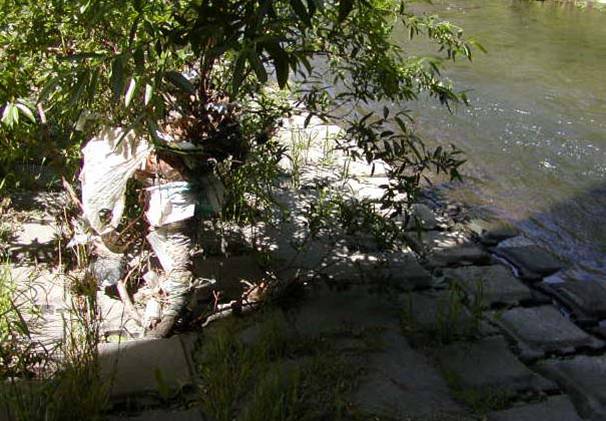
Figure 4. Photo showing compatibility between cottonwood trees and articulated concrete block (ACB) revetment. Trees are growing in openings between the concrete blocks.
|
|
References:
Dowdeswell, W.H. (1987). Hedgerows and Verges. London: Allen & Unwin
Freeman, G. E. & Fischenich J. E. (2000).
Gabions for Streambank Erosion Control. EMRRP Technical Notes Collection
(ERDC TN-EMRRP-SR-22), U.S. Army Engineer Research and Development Center,
Vicksburg, MS. (pdf)
Gray, D. H. & Sotir, R. (1996). Biotechnical and Soil
Bioengineering Slope Stabilization. John Wiley and Sons, New York, N.
Y.
Racin, J. A. & Hoover, T. P. (2001). Gabion Mesh Corrosion: Field
Study of Test Panels and Full-scale Facilities. (Final Report No. FHWA-CA-TL-99-23)
State of California Department of Transportation, Division of New Technology
and Research, Sacramento, CA. (pdf)
Shields, F. D., Jr., (1991) . Woody Vegetation and Riprap Stability Along the Sacramento River Mile 84.5 to 119. Water Resources Bulletin 27(3): 527-536. (pdf)
Vanicek, V. (1973). The soil protective role of specially shaped plant
roots. Biological Conservation 5(3): 175-180.
